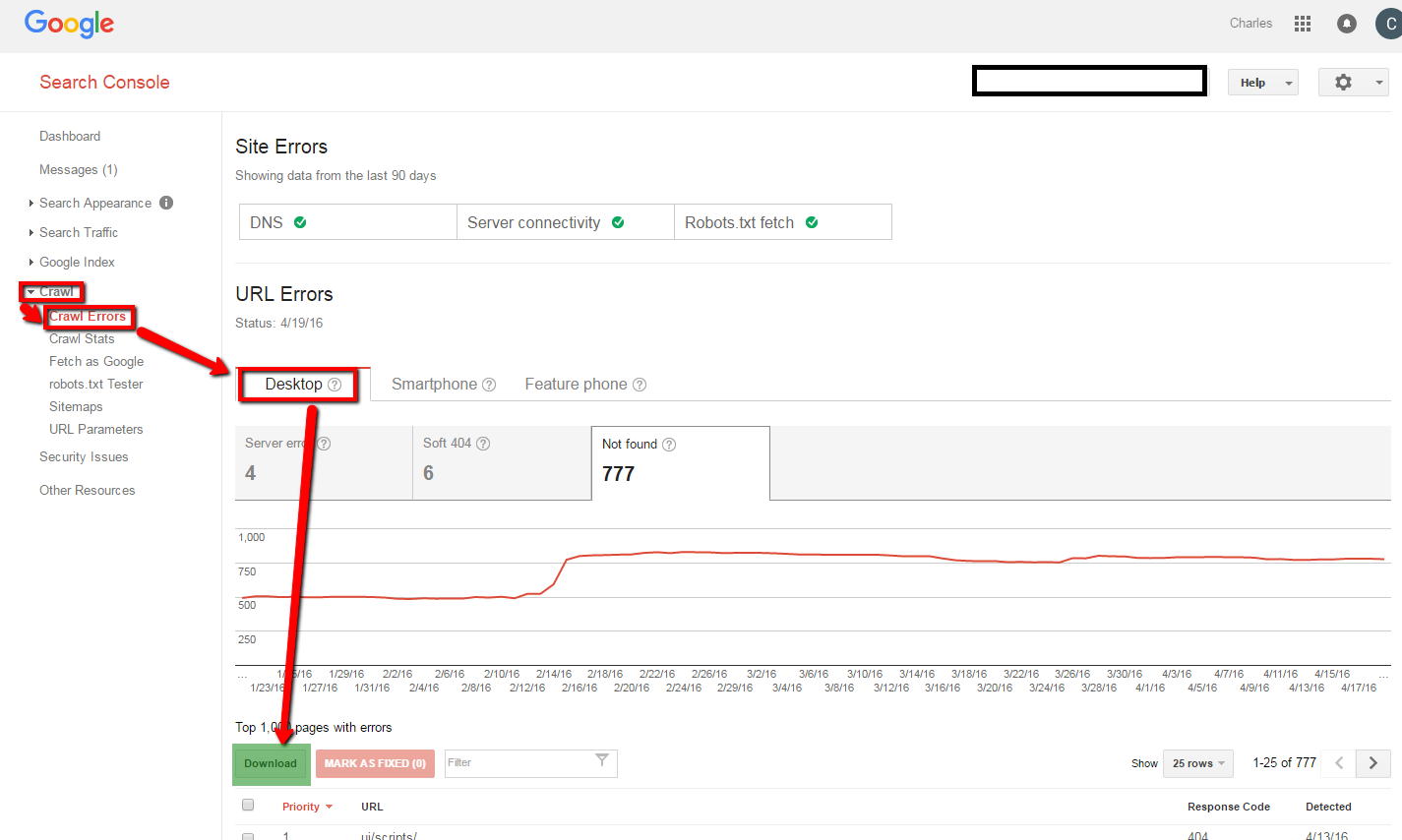by Charles River Interactive | November 20, 2019 | SEO, SEO Blogs, SEO Industry Trends
If you’ve spent any of your company’s time or marketing budget on SEO, you’ve likely heard about backlinks. Backlinks help determine how your website ranks in Google’s search results and for what keyword your website is ranked. While the concept of getting other webpages to link to your site is relatively simple, understanding how they interact with your site and with Google’s algorithm is far from straightforward.
Why are backlinks important?
To determine what and where your website ranks in Google’s
search results, they use a variety of factors, including backlinks. While you
can have the slickest, fastest, and easiest-to-use website in the world, if
there are no backlinks to it, Google may not rank it as well as it deserves
because no other website has given it a “vote” by linking to it!. So, if you’re trying to rank your
organization’s website, it would make sense to reach out to people to build the
backlinks, or alternately hire an SEO firm to build those backlinks. While both
can be good, indiscriminately building links either through your own efforts or
by hiring a third party can backfire, leaving you wondering “How can I get rid
of these spammy backlinks”?
How Bad are your Backlinks?
So, while you can build a multitude of really bad backlinks
really quickly and damage your traffic almost as fast, there are ways to fix
the problem. Namely Google’s disavow tool, which can help your recovery from
spammy backlinks. Google doesn’t encourage its use, and there’s a very
important reason why: Nowadays, not all bad backlinks cause ranking penalties. This
is because of Google’s Penguin updates, which separated the ideas of a spammy
website and a low-quality website. Spammy websites differ from
websites that Google ranks poorly because they actively attempt to scam a
user or manipulate a search engine. A low-quality website is just that –
low quality. Things like misspelling, bad grammar, bad user experience or a
poorly structured site doesn’t necessarily mean spammy, it just means that
search engines will rank other pages about the same subject higher; and links
from the low-quality domains will not receive nearly as much (or in many cases,
any) weight in Google’s ranking algorithm. Because of this, disavowing links is not
nearly as effective as it was prior to the Penguin update.
As a result, it’s harder to shape your website’s backlink
profile to what you need it to be – if
you’ve got a website with thousands of backlinks, and half are from low-quality
domains, that’s still a bunch of pages that you’d need to review in some way to
determine which to cut and which to keep, rather than only going by
industry-standard metrics like Moz’s Domain Authority to determine the
backlink’s value.
So, armed with this information,
how do you find the bad backlinks and disavow them? It’s actually relatively simple: you filter
backlinks with features in common that look spammy; this includes aspects of
the domain like:
Low domain-level scores on SEO
Tools
Lots of SEO tools give their own
rating to domains based on things like ranking, domain age, content length,
content quality, backlink quality, etc. Regardless if you’re using Ahrefs,
Brightedge, SEMRush, or another tool, find the lowest-rated pages and filter
out everything else. That’ll give you your initial pool of low quality and
spammy backlinks.
Spammy Top Level Domains
Top-level domains (TLDs) appear at the end of a domain name, for example the top-level domain for https://charlesriverinteractive.com is “.com”. More obscure top-level domains (like “.biz”, “.pizza”, “.info”) are cheaper to buy than more common ones like “.com”, “.org”, or “.net”. Because of this, spammers love less-common top-level domains, and they buy them in bulk. Some are almost entirely used by spammers – according to The Spamhaus Project , 94% of websites using the TLD “.gdn” are spam. Look for groups of domains with TLDs that are obscure and rate highly for webspam – these URLS are good candidates for disavowal.
Spammy Domain Names
While it’s not necessary that a
domain’s name match the content on the site, it’s easy to tell if a website has
a spammy domain name. Look for terms related to “adult” searches, (adult
videos, gambling, etc.) and other “spammy” search terms, like asbestos and
payday loans.
Beyond these types of terms, look
for “copycat” websites – they’ll have a
URL similar to a well-known, authoritative website, but with a different
top-level domain (think “washingtonpost.pizza” or “forbes.gdn”). These are most
definitely spam – it’s common for organizations to buy lookalike domains so
that they don’t get used by someone else, but they’ll usually never host
anything on those domains, or at most redirect to their real website. If
they’re backlinking to you, they’re most likely not legitimate, and you can be
confident in disavowing them.
Domains on the Same IP
The internet has greatly expanded
in the last 20 or so years, and while IP addresses were usually assigned to one
domain, it’s not uncommon to find multiple legitimate domains on the same IP.
However, any domains that meet one or more of the last three criteria and share
IP addresses are absolutely, no-doubt-about-it spam.
Generating a Disavow List
So now that we know the signs of a spammy domain, how do you get the list? The most straightforward way is also the most laborious – generate the list by filtering for these spammy domain indicators in Excel. However, it takes hours to do right and it might be worth engaging the services of a reputable marketing firm to speed up the process and ensure an accurate and effective domain-based link disavow list. If this is the case, don’t hesitate to contact Charles River Interactive! We’ve got the experience and technology to find spammy backlinks and create the strategies that elevate your business’ web presence and drive the traffic you need for business growth.

by Charles River Interactive | February 2, 2018 | Organic Search, SEO, SEO Blogs, SEO Industry Trends, Uncategorized
Super Bowl LII takes place this Sunday, February 4th at 6:30pm in Minnesota. Last year, more than 111 million viewers watched Super Bowl LI and the incredible comeback of the New England Patriots over the Atlanta Falcons. It can be expected that a similar number of viewers will tune in again this year as the Patriots battle the Eagles for what could be their 6th Super Bowl win.
Although actually watching the Super Bowl is the most important event this upcoming weekend, personally, I find that the food during the Super Bowl is just as important to the overall experience.
In my house, during football season, there’s always something “buffalo chicken” related, whether it be wings, tenders or a nice dip (my favorite). But, what about outside of my house? Which is most popular? To find my answer, I went to right to the source: Google. What is the most searched for buffalo chicken snack form during the week leading up to Sunday’s game? Looks like the Internet is with me because “buffalo chicken dip”, in red, has historically been the most popular of the “buffalo chicken” related snacks leading up to the Super Bowl:

Blue Cheese or Ranch with your buffalo chicken?
Fortunately, or unfortunately, with “buffalo chicken…”, in my house, comes the debate ranch or blue cheese. I was hoping to finally put an end to this debate and prove the blue cheese was the favored pairing, by researching average monthly search numbers using Google Adwords. Unfortunately, my research proved me wrong.
Comparing the query “ranch recipes” to “blue cheese recipes”, ranch outnumbered blue cheese by an average of 700 monthly searches, according to Google Adwords. Even the trend for these searches proved me wrong! “Ranch recipes” are more popular during AFC and NFC Championships and Super Bowl weekend than “blue cheese recipes”.

Based on that information, looks like I’ll be making a buffalo chicken dip with ranch instead of blue cheese mixed in.

Who wants to be healthy on Super Bowl Sunday?
Turns out, a lot of people do. As did many Americans, I set a goal to get healthier in 2018. Obviously, buffalo chicken dip with ranch dressing is definitely not the way to go about doing that. Lucky for me, I’m not the only one looking for either healthy or good Super Bowl snacks! Interestingly enough, looking at Google trends, the query “healthy super bowl snacks” has seen a 50% rise in search queries since last Super Bowl weekend. Looking at January and February 2017 average monthly searches for “healthy super bowl snacks”, the query had 1.2 million and 1.8 million searches, respectively.
Looking for inspiration to make some healthy super bowl snacks along with your buffalo chicken dip? The following websites are holding the top spots in search results:
Let’s not forget about those 3 million American’s who have celiac disease that need a gluten-free option to indulge in during the Super Bowl. Although queries surrounding “gluten-free super bowl snacks” range from 10 to 40 average monthly searches, according to Google Adwords, the following websites hold the top spots in search results for these treats:
Gluten-free or not, healthy snacks or buffalo chicken dip, I know I can’t wait until game time to watch Super Bowl LII and munch on some yummy treats, no matter what they are. Oh, ya, and Go Pats!

by Charles River Interactive | April 29, 2016 | Organic Search, SEO, SEO Blogs, Uncategorized
No website is perfect. But of all the potential issues that could affect user experience, none is so obvious as the one that announces itself: the 404 error. If a user encounters this issue on your or your client’s site, the server will clearly state there is a problem, usually with some variation of “404 error: Page not found.”
If you manage a very large site, 404 errors are inevitable at some point. The key is establishing a process to find and resolve them quickly and efficiently.
What is a 404 Error?
A 404 error is a page that was not properly removed from a website or redirected in your content management system (CMS). As a result, the page appears to live on the website, but it no longer exists on your server. If a user tries to visit the page, they receive an error message.
Regularly resolving your site’s 404 errors is a signal to Google that you are maintaining a healthy website. It also improves user experience by minimizing the number of broken pages visitors may encounter.
Tips for Managing 404 Errors
- Prioritize: If you have a large site with hundreds of 404 errors, the best option is to prioritize your efforts. Use Google Analytics (or your preferred web analytics platform) to evaluate how much organic traffic each 404 page has received over a predetermined period of time. Tackle the pages with the most traffic first, and work your way down.
- Automate: You can automate redirects using the .Htaccess file in your CMS. Choose which page you want to be the replacement for a 404 error page. It may be a custom redirect page, or you may want to send users back to your homepage or to a search function. Please note: An .htaccess file is an extremely sensitive file in your CMS. We highly recommend your IT department sign-off on any edits to an .htaccess file.
3 Tools for Fixing 404 Errors
Outlined below are some tools to effectively find and resolve 404 error pages.
Google Webmaster Tools
Google Webmaster Tools (a.k.a. Search Console) is a resource from Google that web developers use to monitor website issues and control how their sites appear in search results.
Assuming your GWT is verified, here are the steps you take:
1. Login
2. Select your domain
3. Select ‘Crawl’ on the left sidebar
4. Crawl Errors
5. Select ‘404 Errors’
6. Select ‘Download’ to export as Excel/CSV file

Screaming Frog (free and paid versions)
Screaming Frog’s SEO Spider is a tool that allows you to easily crawl hundreds of URLs for 404 errors. The free version will crawl up to 500 URLs; the paid version will crawl an unlimited number across your entire website. You just enter the URLs and the program creates a file ready for export.
Yoast SEO for WordPress (free and paid versions)
If you host your entire site or blog on WordPress, Yoast SEO (formerly known as WordPress SEO by Yoast) is a tool that can help you configure your pages for SEO. This plugin, which you download, allows you to edit your URLs, meta data, XML Sitemaps, as well as monitor for 404 errors via integration with Google Webmaster Tools. The premium version is available for $69/year for one site.
When to Use 301 Redirects
We highly recommend 301 redirects when you want to redirect individual pages or even entire websites. A 301 redirect is a permanent redirect from one URL to another. These types of redirects are especially useful when the missing page enjoyed a high organic search rank on search engines. The new, 301 redirect page maintains the SEO strength of the link even when redirected.
Sometimes there isn’t a good page to redirect to. In this case, a custom error page should be provided.
Creating Custom 404 Pages
If a permanent 301 redirect does not make sense, then you can consider creating a customized, visitor-friendly error page to appear in place of the missing URL. Typically, website use the same custom page across the site for 404 errors.
Custom error pages typically feature the following:
- A message to the user explaining that the page no longer exists
- A search box to help a visitor find exactly what they want
- A link to the home page
We hope this has been a helpful tutorial on how to find and fix 404 pages.
You can make it even easier on yourself and have Charles River Interactive give your site an in-depth SEO Analysis. Contact us today.
Interested in learning more tips for managing your website? Read more from our blog, View from the Charles:
3 Reasons to Use Google Tag Manager
Mobile Search Updates: Why You Need a Mobile Site
by Charles River Interactive | October 24, 2013 | Organic Search, SEO Blogs, Uncategorized
By Lauren Rockwell
It’s not the end of the world, and it is certainly not the end of SEO. I admit that I was upset when this move to encrypted organic Google search happened. Since I find most of my content ideas from long-tail keyphrases with one visit each, I was annoyed that this ‘privacy’ solution would hinder my ability to extract content ideas from Google Analytics. Then, I got over it. I was able to move past this pretty quickly after going through the latest reporting cycle. In previous posts, CRI has highlighted that SEOs and webmasters still have several tools / methods to show SEO value by analyzing:
- Landing Pages
- User Behavior Statistics

- Webmaster Tools Data (Google & Bing)
- Google AdWords Dimensions (Paid & Organic Report)
The removal of organic keyphrases may even make me a better Organic Search Strategist, because I am digging deeper to find the story beyond entrance keywords and visits. Check out these ways to find content ideas and show SEO value:
(more…)







